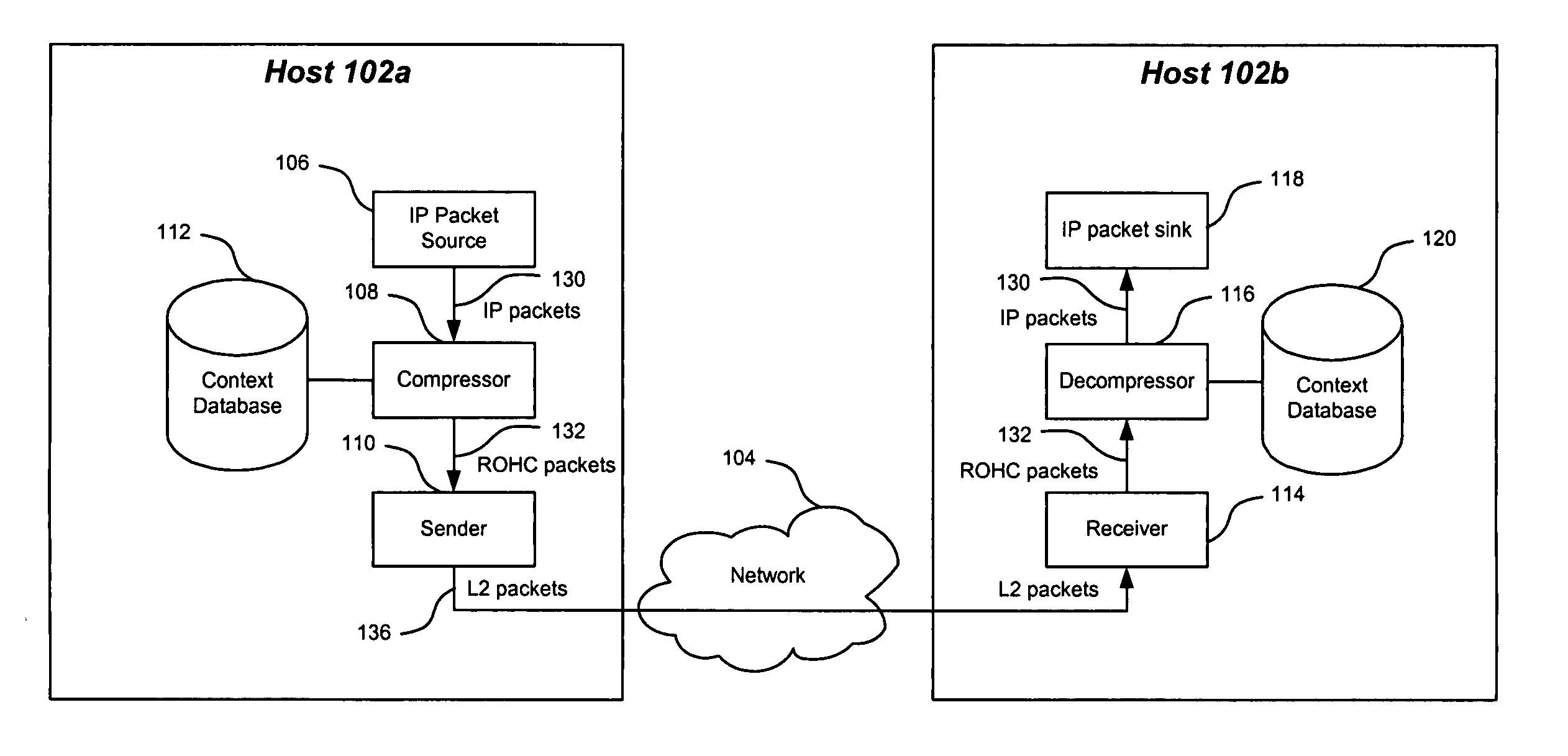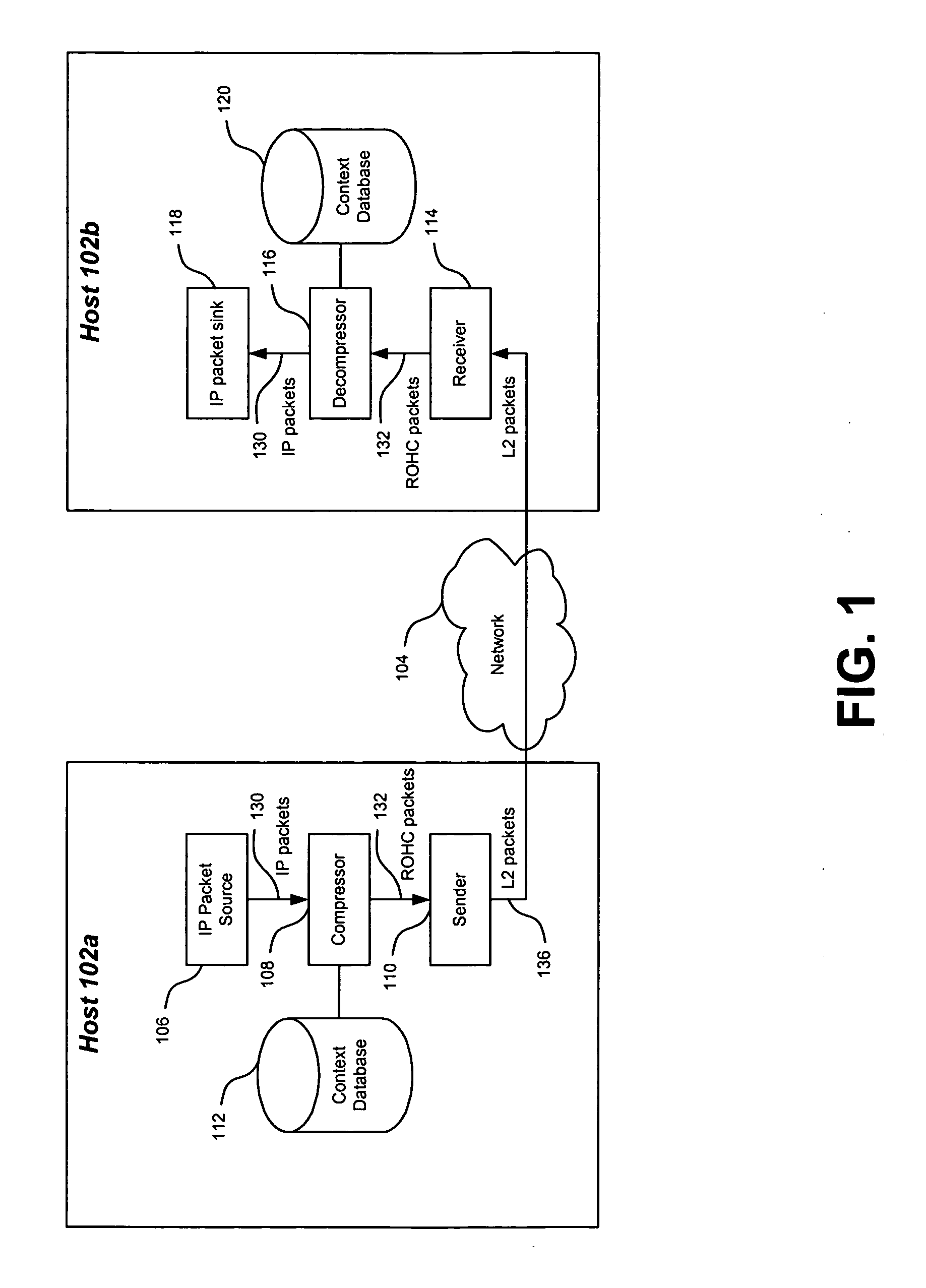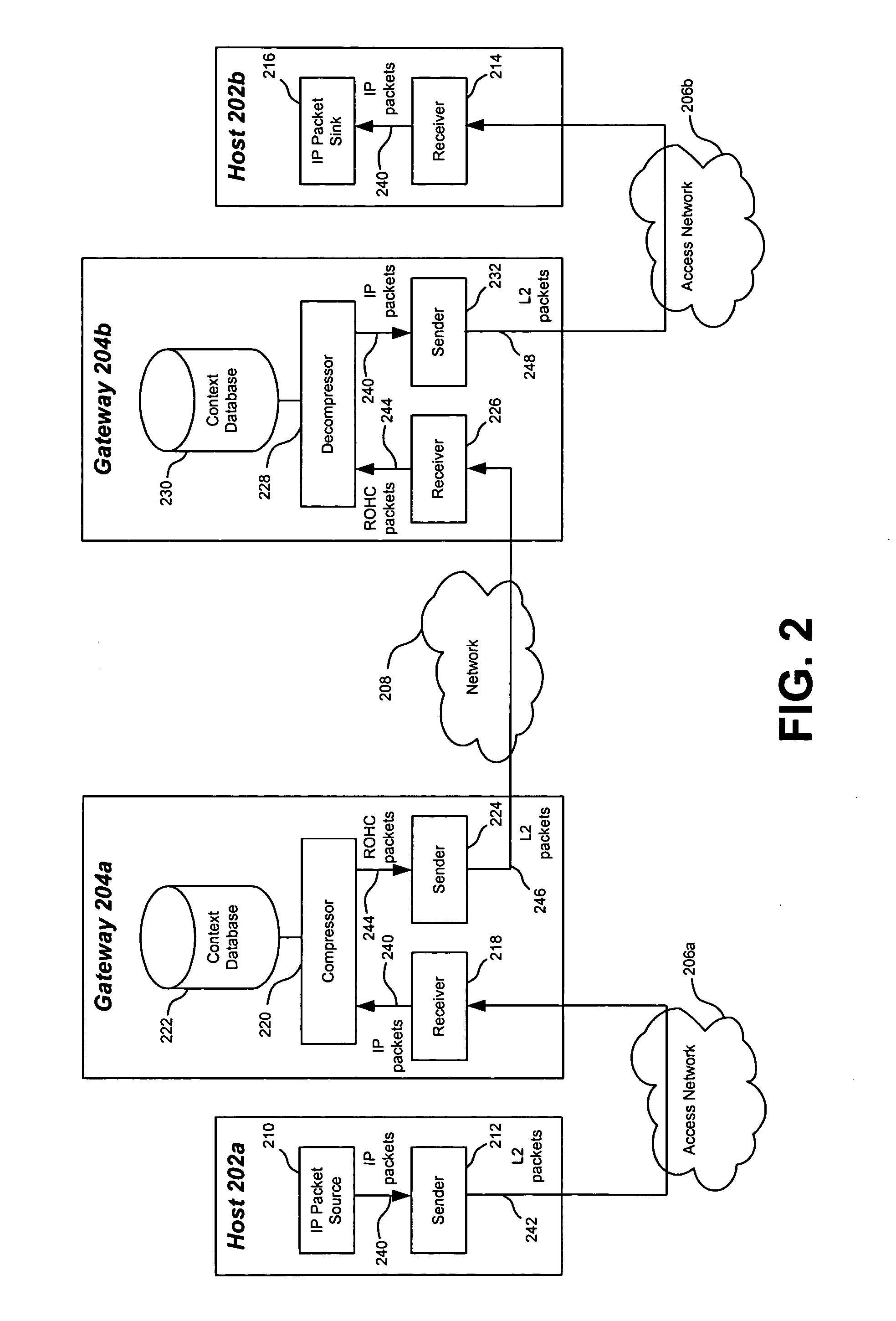Method and system for header compression
a header and packet technology, applied in the field of packet-based communications, can solve the problems of protocol transmission errors, packet header overhead consumption, and limited options for compressing headers of protocol packets
- Summary
- Abstract
- Description
- Claims
- Application Information
AI Technical Summary
Benefits of technology
Problems solved by technology
Method used
Image
Examples
Embodiment Construction
I. Operational Environment
[0025] Before describing the invention in detail, it is helpful to describe environments in which the invention may be used. Accordingly, FIGS. 1 and 2 are block diagrams of operational environments where header compression techniques are employed to conserve communications bandwidth.
[0026]FIG. 1 shows an environment in which a first host 102a transmits packets across a packet-based network 104 to a second host 102b. To conserve the bandwidth of network 104, header compression is performed on these packets. This compression may be in accordance with various techniques, such as the ones described herein. Accordingly, host 102a compresses the protocol headers of one or more of the packets sent to host 102b. Upon receipt, host 102b decompresses these headers.
[0027]FIG. 1 shows that host 102a includes an Internet Protocol (IP) packet source 106, a compressor 108, a sender 110, and a compression context database 112. Host 102b includes a receiver 114, a decomp...
PUM
 Login to View More
Login to View More Abstract
Description
Claims
Application Information
 Login to View More
Login to View More - R&D
- Intellectual Property
- Life Sciences
- Materials
- Tech Scout
- Unparalleled Data Quality
- Higher Quality Content
- 60% Fewer Hallucinations
Browse by: Latest US Patents, China's latest patents, Technical Efficacy Thesaurus, Application Domain, Technology Topic, Popular Technical Reports.
© 2025 PatSnap. All rights reserved.Legal|Privacy policy|Modern Slavery Act Transparency Statement|Sitemap|About US| Contact US: help@patsnap.com



